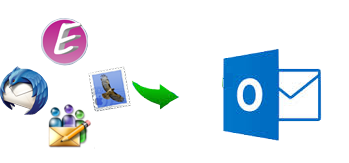
MBOX is an email client application that is compatible with over 20 other applications such as Powermail, SeaMonkey, Pocomail, Thunderbird, Apple Mail, and etc. However, due to several reasons most of the users prefer to switch from MBOX to Outlook as it offers an array of advanced features. In this blog, we will list some of the free methods on how to convert MBOX files to PST format. You can stop your research on the internet as we have mentioned some of the free methods through which a user can convert their MBOX data to PST format.
What Are The Reasons Why A User Prefers To Switch From MBOX To Outlook?
Beneath, we have listed some of the reasons why a user prefers to switch from MBOX to PST file type:
- PST Is Compatible With Numerous Types Of File
Outlook PST is compatible with numerous types of file and the users can handle contacts, tasks, calendars, emails, notes, and etc. whereas, MBOX is solely compatible with email messages.
- PST Has Advanced Features
Outlook PST has many advanced features that make the whole conversion of files easier, however, MBOX has a simple email client application with fewer features.
- PST Works In The Absence Of The Internet Connection
A user can use Outlook even when there is no internet connection as opposed to MBOX. The user can operate emails in the absence of the internet connection if they use Outlook PST.
- Better Security Features
Outlook PST has more advanced security features as compared to MBOX email client application. The user can skip the headache of losing data because of poor security if they switch to PST from MBOX.
A List of Some Free Ways to Convert MBOX Files To PST Format
Convert Files to MBOX through Apple Mail
- Open the ‘File Menu’ and import Mailboxes files.
- Select a file in MBOX format from the Import Dialog Box and click on continue.
- Import the files to the desired location.
- Click on ‘Done’ when the process completes.
Convert Data to MBOX through Eudora
- Open Eudora and rename the MBOX file by ‘.mbx extension’.
- Move the file to the ‘Eudora Directory’. The default way of the file is “C: Documents and Settings<user>Application Data\Qualcomm\Eudora”.
- Launch Eudora and open .mbox file by double-clicking on it.
